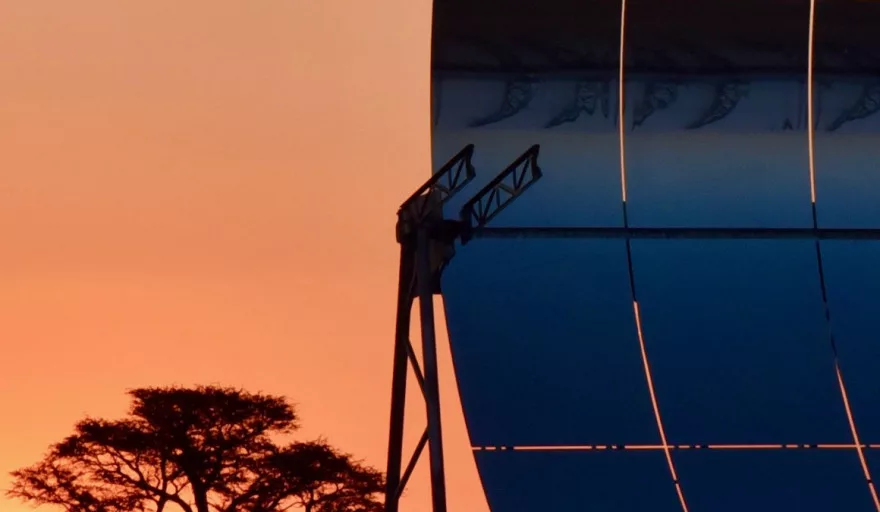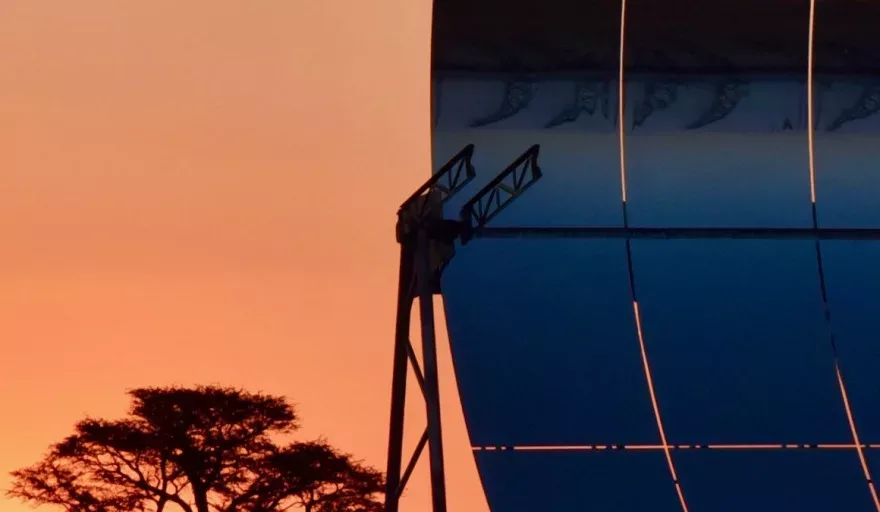
Despite being home to 15 percent of the world’s population, Africa only accounts for one 20th of global energy use. In this sense, energy consumption per capita across the continent is three times lower than the global average.
This can be attributed to a number of factors – the African industry largely lagging behind the likes of Asia, Europe or North America, for example. However, aside from these, ultimately substantial proportions of the region simply do not have reliable access to grid power.
According to global energy and utility firm ENGIE, currently only 37 percent of Africans have access to electricity, while rural access rates are approximately only 30 percent as good as those in urban areas. Further, while such statistics highlight the instability of the continent’s energy networks, the rise in demand that is expected to occur in the coming decades poses an even greater problem for the region – an issue that needs to be addressed sooner rather than later in the eyes of ENGIE’s Africa CEO, Yoven Moorooven.
“Energy demand is growing fast in Africa because of the rate of population growth, expected to almost double by 2050,” he states. “This will represent a challenge for the private and public sector and they must demonstrate a capacity to rightly address the energy supply shortage.”
Purely from a number’s perspective, ENGIE is well placed to play a crucial role in attempting to tackle these challenges head on. Having operated in the region for 50 years, the Company currently owns approximately 3.15 GW of energy infrastructure either in operation or under construction, whilst it turns over more than $460 million of regional revenue on a yearly basis.
“In my opinion, the African continent and its countries are unique, and its energy industry will be a key driver of Africa’s global development for years to come,” Moorooven explains. “I am excited to be involved in shaping the continent’s future energy supply, making decisions around investments that will deliver sustainable solutions and provide millions of people and businesses with electricity.”
Confronting the obstacles
Moulding this future, however, is easier said than done. The outlook as it stands today is filled with a range of issues and monumental challenges, reflected by Moorooven himself in an analysis of the impending growth of urbanisation across the continent.
“According to the Brookings Institution, there will be nearly 350 million new African city dwellers by 2030. A billion more people are expected to be living in African cities by 2063. This rapid urbanisation, combined with the continental infrastructure deficit, will make life in African cities expensive and slow down economic growth,” he explains.
“Equally, there’s a real risk that climate change will put a massive extra strain on these cities. For example, the rise in temperatures will see the need for air conditioning go up and in turn demand better electricity infrastructure.”
Even the most developed cities in other parts of the world are having to ready themselves for similar socioeconomic and environmental shifts. However, with Africa’s energy infrastructure significantly lagging behind the global average, and with the region expected to witness a much greater influx of new inhabitants, the situation is much more problematic.
“Another issue is connectivity,” Moorooven continues. “Outside Northern Africa and South Africa, transportation and distribution networks remain the weakest link in Africa’s energy industry.
“The development of large centralised power plants and increased penetration of renewable energy will create new opportunities in transmission and distribution. However, since a large portion of Africa’s population lives in remote and rural areas, receiving power from the grid could still be decades away.”
Energy 4.0
Despite this, there has been notable progression in the way of tackling these problems, evident in the development and implementation of off-grid solutions in remote areas.
“In the years to come we foresee off-grid and dispatchable renewables playing a major role in helping to cater to the energy requirements of all Africans,” Moorooven reveals.
Moreover, as alternative sources of energy are increasingly explored, more storage capacity will be required and, ultimately, the importance of technologies will become ever pressing. With this in mind, innovation is currently thriving across the continent, with multiple players, including ENGIE, looking to leverage industry 4.0 solutions to better address and expand capacity.
Such has led to the introduction of innovation hubs, greater levels of investment, and the growth of public-private partnerships, and high-level academic institutions have been working to ensure that the next generation is well versed in not only understanding the rising problems, but able to help stunt and reverse any unsustainable trends.
“Just as mobile phones have transformed the continent, Africa is now on the brink of a technological leap in its mode of energy supply,” says Moorooven. “Digitalisation in the energy sector allows utilities to maintain grid stability and reliability, monitor the grid and more effectively identify failures, reducing operations and maintenance costs and extending the lifespan of crucial assets.”
ENGIE’s own strategy has largely been coordinated in line with this forward-thinking approach.
Moorooven explains: “In aiming to adhere to this, we have incorporated centralised and decentralised power production, as well as energy services and decentralised solutions for off-grid customers.
“Through our off-grid energy solutions, we want to promote energy access – and beyond energy, many more necessities: water, mobility and education in rural Africa. There will also be a real necessity for larger African cities to tackle sustainable growth challenges, and we will offer our expertise in this area.”
Working alongside African stakeholders, authorities, regulatory authorities and industrial partners, ENGIE hopes that Africa’s problems be solved by African people in the long term, a prospect that would bolster socioeconomic development on multiple fronts.
From Morocco to South Africa
This ethos continues to manifest itself in the countless energy-generation and transmission projects that the Company undertakes in Africa on a yearly basis.
During the last 12 months, for example, the firm has placed particular emphasis on extending its position in Morocco and South Africa; has grown its Access to Energy activities; has established more substantial power generation networks; and has made a number of acquisitions to strengthen its provision of services businesses.
“Our ambition is to become a leader of energy services in Africa and this year we made some significant acquisitions, acquiring local leaders AfricPower/Tieri in Côte d’Ivoire, Spie and Finatech in Morocco and Thermaire/Ampair in South Africa,” adds Moorooven.
Equally, the firm will soon be completing the construction of a 100 MW concentrated solar power plant in South Africa, named Kathu, that is in its final development stages, has begun building a wind park in Egypt and a solar PV installation in Senegal, and reached more than one million customers in the off-grid business
This milestone has largely been hit through its domestic solar installations, made possible by its work with Fenix International and its local mini-grid projects, undertaken in partnership with PowerCorner.
Advocating investment
All of the aforementioned activities are crucial stepping stones on the path to tackling Africa’s energy infrastructure deficit, and ENGIE is expected to continue to be the driving force of development as more countries become increasingly open to external investment and tenders.
In the eyes of Moorooven, those who advocate foreign investment will be the true beneficiaries, profiting from accelerated development and greater opportunities.
He explains: “To attract more private investment, an efficient and effective framework will be necessary. Many African governments have taken the initiative to implement legal and institutional policies to strengthen their national energy sector, but if these aren’t fully operational in the near future, countries will miss out.
“Projects will need to be more bankable in the sense that more risk is taken by one side and more commitment by the other; the public and private sector will need to work closely together.”
The majority of investments from all parties are expected to come in the form of renewable energy projects, owing to both the high potential for such in the region and the stress that is being placed on ensuring the continent’s carbon’s neutrality is significantly improved.
Africa is a continent seen to be particularly vulnerable to climate change, largely due to the increasing prospects of drought. A two percent rise in temperatures could lead to a 10 percent drop in crop yields, according to the Brookings Institution – a statistic that could have drastic consequences for the African population.
In this sense, renewables combined with other low-emission resources such as gas-fired power are expected to provide a cost-efficient, environmentally friendly and reliable energy supply moving forward.
“Compared to current sources which still include coal, heavy fuel oil and diesel-fired plants, this combination offers a cheaper and greener alternative,” adds the ENGIE Africa CEO.
Looking ahead, Moorooven is hopeful that the Company will play a major part in enabling both this alternative power transition and expansion as the continent moves into a new energy era.
He concludes: “It is my ambition that ENGIE will be the natural partner of choice, be it for energy services, centralised or decentralised generation, engineering or infrastructure. I’d like us to be here in Africa for centuries to come.
“To be more precise about the short term, in the next years, I hope ENGIE Africa will introduce solar home system and mini-grid activities in multiple new countries, develop new energy services hubs in two or three countries and of course develop and build more renewable power plants across Africa, with the grid-scale storage and grid-scale support to match.”






























